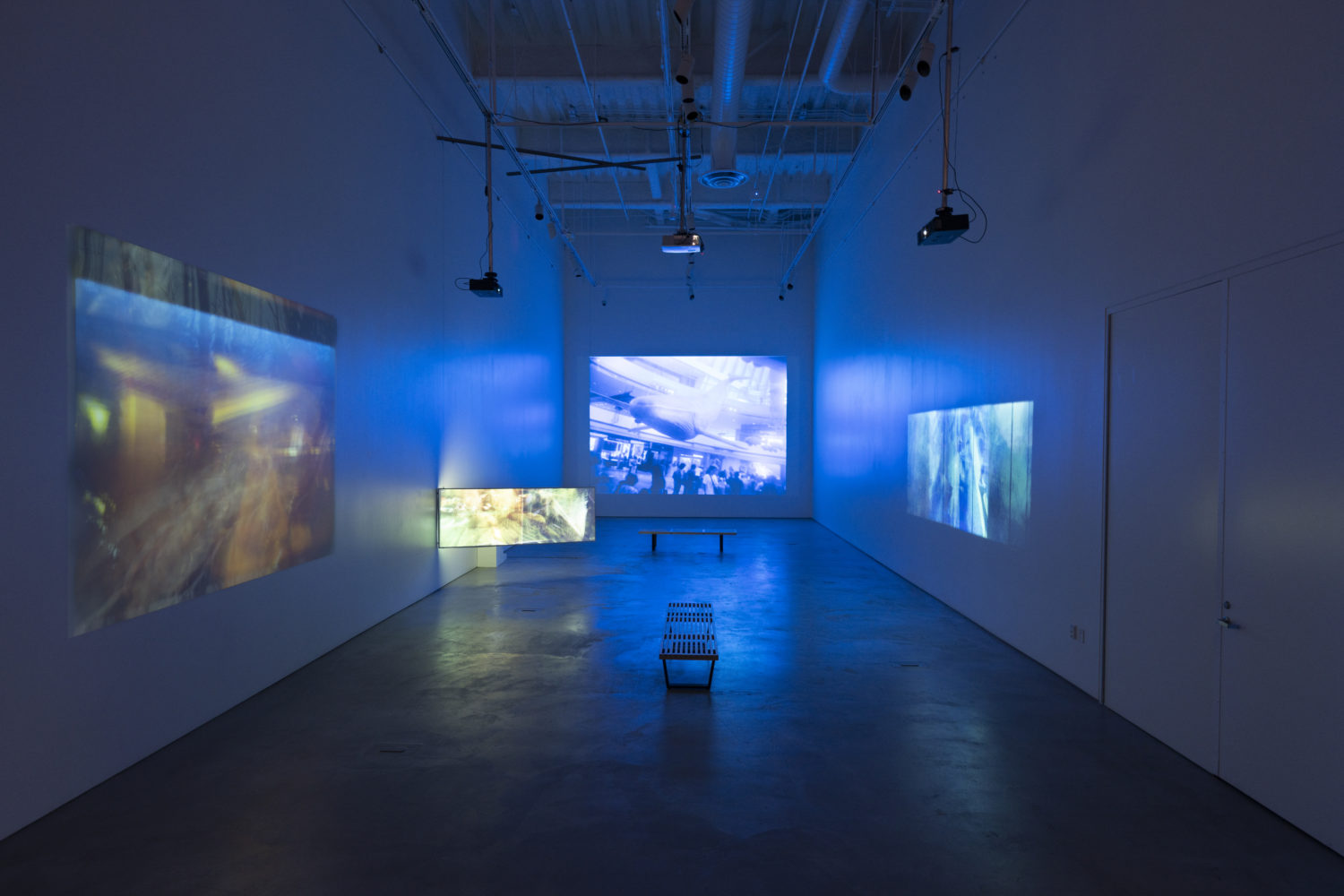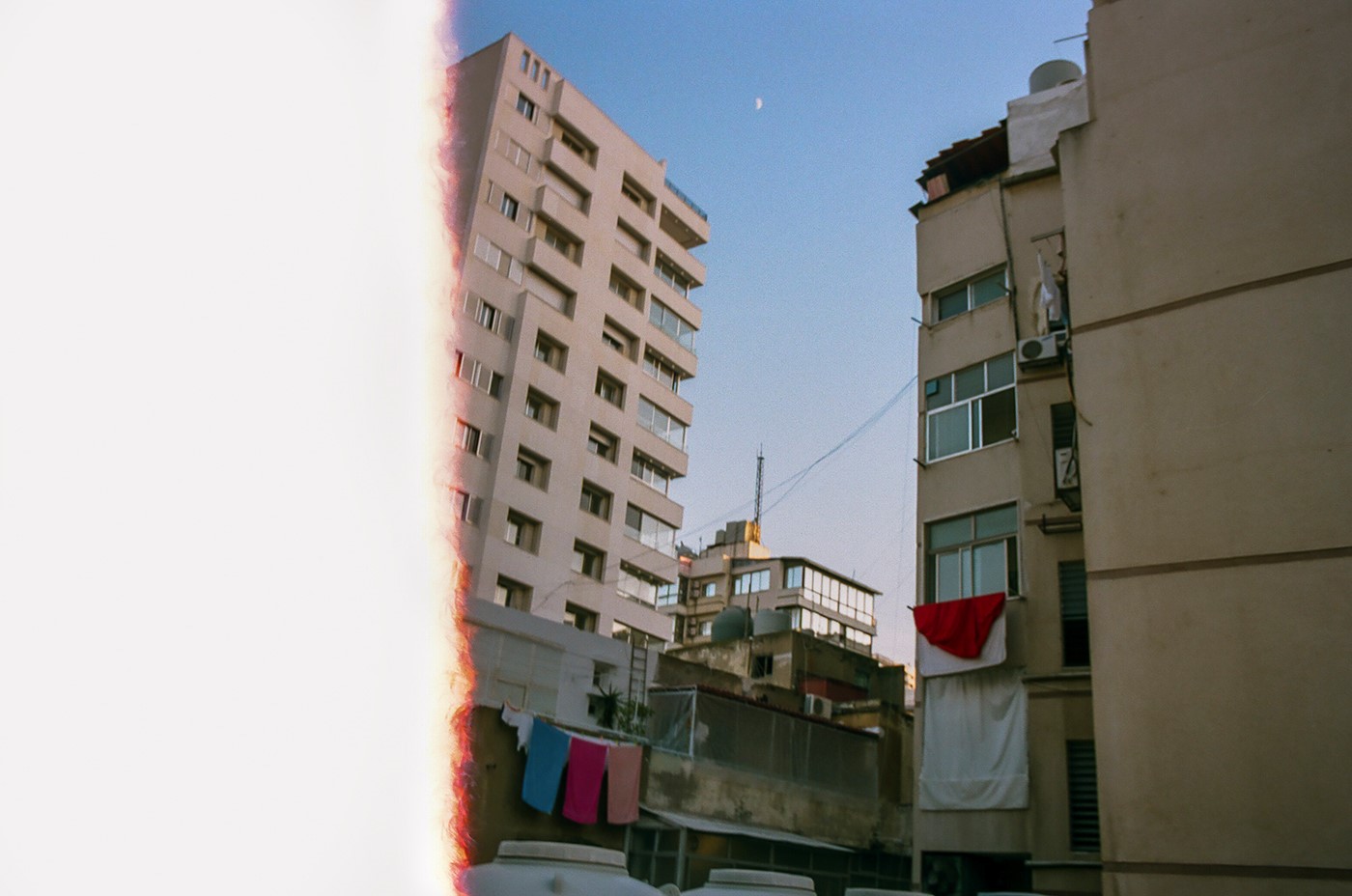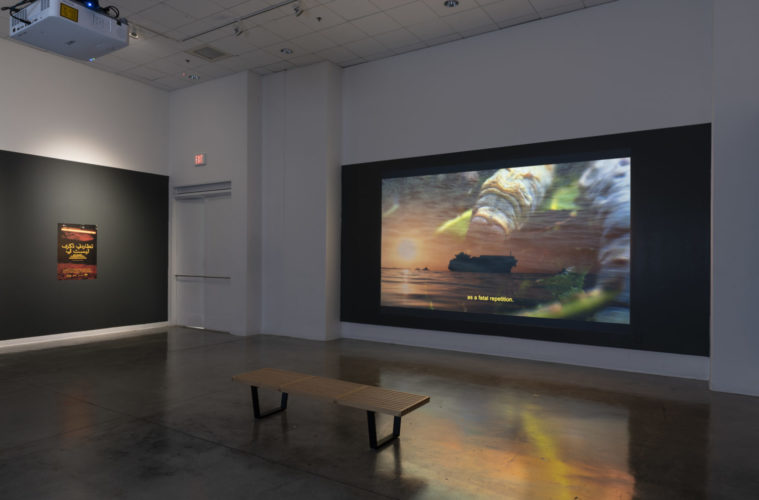Two complementary exhibitions, Revolution Everywhere and The Messiah Triangle at UC Irvine galleries, delve into the disorientation, sense of impending doom and ultimately hope in the Middle East and beyond. Juli Carson, UCI professor of art, curator and gallery director, explains, “The projects we commission provoke intelligent debate on the subject of art in its most expansive poetic and political definition.”
Revolution Everywhere: Thresholds of Resistance features large-scale film and photographic installations by three artists who have lived among revolutions in Beirut, Lebanon and Hong Kong. The exhibition was inspired by the simultaneous uprisings in Beirut and Hong Kong in 2019 – events that activists, writers and artists in both locales recognized and embraced. These protests were discussed in an interview/dialogue with participants from Lebanon and Hong Kong in June 2020. That interview became the genesis of the title, Revolution Everywhere.

Heather M. O’Brien – Revolution Everywhere (Credit: Yubo Dong of studio photography)
This exhibition is comprised of three solo installations, referencing the recent revolutions. In each installation, a millennial artist’s work is inspired by what Carson refers to as a “political primal scene,” or a childhood/young adult memory of a traumatizing political event. Participants are Panos Aprahamian, an artist/filmmaker who grew up in Lebanon, witnessing the Armenian Genocide there, and later learned about an Israeli Airforce bombing of a U.N. shelter with civilians; Simon Liu, an artist/filmmaker who lived in Hong Kong with a British mother and Cantonese father during political turmoil, who often revisits his country of origin to witness its deleterious changes; and Heather O’Brien, an artist/filmmaker whose work is inspired by watching devastating reports of the Lebanon Civil War (1975-1989) on TV during her childhood in Colorado.
Carson explains, “I asked all three artists to expand upon their primal scenes, discussing how they came to their aesthetic strategies – ones driven by their politics – that have culminated in their first major body of work… They all chose to represent the revolutions in which they find themselves embedded, from a position of ‘aesthetic distance.’ Hence the poetic turn towards rather than away from the cataclysmic events of their respective cultural landscapes.”
Aprahamian explores his country’s history in his work and this exhibition, contributing idealized images of Beirut. His closeup video of an intricate silkworm farm references the once flourishing silk industry in Lebanon, which today experiences ongoing devastation. His “Odorless Blue Flowers Awake Prematurely” depicts flowers blooming within the residue of the August 4, 2020 blast in Beirut.

Simon Liu – Revolution Everywhere (Credit: Yubo Dong of studio photography)
Liu is archiving what he refers to as “the rapidly evolving psychogeography of his place of origin” through alternative documentary forms, abstract diary films, multi-channel video installations and 16mm projection performances. Some of his images depict the aftermath of Hong Kong streets following protests, with refuse such as shoes and masks left behind, along with celebrations including fireworks.

Heather M. O’Brien (Revolution Everywhere)
O’Brien’s installation includes photos of Beirut street and domestic scenes; a few with clothes hanging on lines, another of broad windows looking out at a bucolic courtyard, and others of attractive living spaces with potted plants and the sun streaming in. Some of her accompanying wall text, often contrasting with her images, describes her immersion in the tumultuous events there. She wrote: “The sound of sweeping glass permeates the neighborhood. The port is on fire again. WhatsApp messages fly back and forth. Do we leave the windows open or closed this time? How do we escape the flying shards of glass? I close the shutters and hold Liam close. One month since the explosion. One month postpartum. The hardest and most delicate month of my life. No one prepares you for the strength this process requires, or the depths it will take you. All while seeing a city you love die before your eyes.”
Carson elucidates that the three artists’ installations are often politically oriented, adding that they allude to the hope for a better world and to healing, as they artfully repurpose dystopia into beauty.

Michael Dahan – The Messiah Triangle (Credit: Yubo Dong of studio photography)
The film The Messiah Triangle is even more dramatic and foreboding. The short black and white movie is based on the life of Juliano Mer-Khamis, an actor and activist who grew up in Israel with an anti-Zionist Jewish Socialist mother and a Palestinian Christian Communist father. He was assassinated in the West Bank in 2011 near the theater he founded. The event was dismaying to those who knew about him and especially about his efforts to achieve solidarity and coexistence among Palestinians and Israelis.
The Messiah Triangle’s message, according to its Israeli American filmmaker Michael Moshe Dahan, is to expose the toxic relationship among Judaism, Christianity and Islam. The film’s didactics further explain that the three religions’ “messianic impulses have resulted in history’s greatest and most violent conflicts as both religious and nationalist wars.”
The conceptual film features three actors auditioning to play the movie roles that Mer-Khamis once played, rendering the project as a film within a film. The mood is dark with the actors appearing suspicious and menacing, as they portray people who have been traumatized by violent political events. They also interact defensively with the film’s confrontational female director, Yael.
The movie’s ominous scenes, along with the superlative acting, draw the viewer in. Further, immersing oneself in the movie may instill the hope that the cast will transform its somber mood, or that the auditioning actors will resolve their issues with the director. Or as the film’s producers wrote, “Can one man’s identity not only embody conflicts that are older than history, but perhaps, in some version of the future, also help resolve them?”
The overall effect of The Messiah Triangle is to alert viewers to the gravity of seemingly unsolvable issues among people of the world’s three major religions. And as with Revolution Everywhere, the project is artful, morphing the Israeli/Palestinian legacies of trauma and national identity into a work of visual and literary poetry.
The art enthusiast may question how political activism and disorientation can inspire art. Carson, previously Professor of Art History and Curating at the American University of Beirut in 2018-2019, anticipated protests while living in that city. With those traumatizing events as stimuli, she talks adamantly about creating art out of the devastation of failed nation-states and forced Diaspora. She asserts that art has curative powers, especially during tumultuous times, such as the era we are living in. Or as a Buddhist philosopher wrote, “We must not live to destroy. We have the spiritual power to create peace and happiness.”
Revolution Everywhere is on view at UCI’s Contemporary Arts Center and Room Gallery. The Messiah Triangle is on view at UCI’s University Art Gallery. Both are on view through December 11; Tue.-Sat., noon-6 p.m.; [email protected], uag.arts.uci.edu.
Advertising disclosure: We may receive compensation for some of the links in our stories. Thank you for supporting Irvine Weekly and our advertisers.

